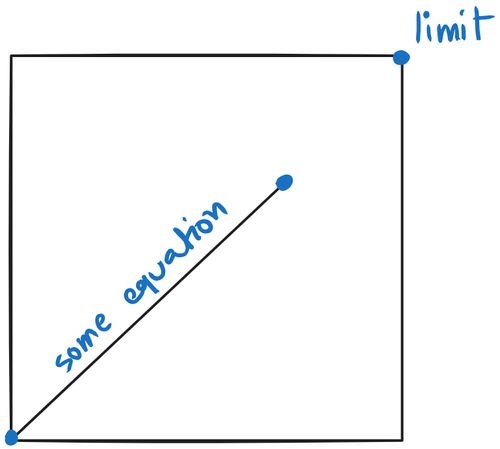Sky(e) is the limit
Using e as an introduction to limits
Limits are an interesting concept. Being new to this myself, I was trying to visualise this to understand the core concept.
What are limits?
Suppose, you're a equation of variable

It's like the more you try to resist your urge to eat an ice-cream, the closer you get to actually eating one. (That's my visualisation.)
e as a limit
Let's take an expression:
This looks awfully similar to the equation of :Compound Interest; because it kinda is.
But what happens if you start chugging in numbers to
... we see that it is getting closer and closer to the :Euler's Constant!
Really fascinating! I suppose all the smug businessmen will leave their shops and start doing Calculus after seeing this.
To actually see it happening
I made a Python script to plug in values of x in increments, and I could really see it happening. This helped a lot in empirically understanding the concept.
from sympy import * # This package allows you to do complex mathematical equations
iteration = 0 # where x = iterations
while True:
iteration += 1000 # increments
n = symbols("n")
expression = (1+1/n)**n # (1+1/x)^x
number = limit(expression, n, iteration)
print(f"When n = {iteration} -> {float(form)}") # Prints result
So yea, there you go. There are fun stuff happening in Maths (and all around the world), and once we get exposed to it, there's no going back.
Happy Practicing!
:x Euler's Constant
It is a mathematical constant 2.718281828... named after mathematician Leonhard Euler. Something like the
This comes in handy in Logarithm as well.
:x Compound Interest
Where:
- A is the Compound Amount
- P is the Principal Amount
- I is the Interest Rate
- N is the no. of times interest is compounded per year
- T is the no. of years.
Continue Reading in Mathventures
Next:
Coin Toss Possibilities in an expression
Previous:
End of Part I: Algebra
or go back to blogs..